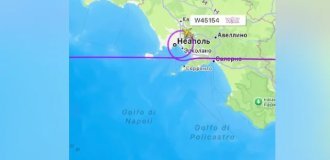Million Dollar Old Man - Clint Eastwood (25 photos)
Usually, when it comes to movie stars whose age is approaching the 100-year mark, their ancient achievements are listed. They say that in the shaggy year the name made a significant contribution to the development of cinema, so today we honor this patriarch. But for every rule there is an exception. In this case it's Clint Eastwood. 
On May 31 he will turn 94 years old. He has several Oscars and, of course, cult status. It would seem that you can calm down and rest on your laurels. However, this cheerful old man not only does not look like a museum exhibit, whose achievements are in the distant past. On the contrary, it seems that with age he only becomes more productive, and his talent is revealed more and more fully.
Clint Eastwood is one of the few relics of the era of political incorrectness. His heroes always went ahead and solved problems with their fists, weapons and cunning, rather than complaining to a psychoanalyst. Lately, Eastwood has often grumbled that today's society is raising weaklings. “I don’t even know where this snotty generation came from. Maybe when people began to wonder about the meaning of life? – he says as if he himself does not make serious, deep films, but exclusively primitive action films of category B. 
Women and cars
By his own admission, Eastwood signed up for an acting club in Los Angeles just to pick up girls there. So frivolous was the beginning of the journey of a man who later became famous for playing extremely harsh characters.
Young Clint Eastwood was indeed quite happy-go-lucky and was more interested in girls than anything else. In second place are beautiful fast cars, for which he mastered the profession of an auto mechanic. And there was music - Clint loved jazz and played the piano quite well. School didn't bother him so much that he doesn't even remember whether he graduated from it. Not knowing where to go, 21-year-old Eastwood joined the army and was sent to serve in his native California, in Ford Ord. 
While in the army, Eastwood made contacts that later helped him make a film career. According to one version, the handsome handsome man caught the eye of the assistant director of a film filmed at Ford Ord by Universal, and he remembered him. According to another, while living in Los Angeles after his dismissal, Eastwood met an army buddy there who was a member of Universal, and he managed to arrange a meeting between Eastwood and director Arthur Lubin.
Having assessed Clint's appearance, Lubin became depressed when he saw his performance. Eastwood moved stiffly, pronouncing his lines barely audibly and without opening his lips (this manner eventually became his signature technique). Despite such a depressing picture, Lyubin decided to try to make a man out of the careless rake and sent him to acting classes. According to Eastwood's first wife Maggie Johnson, the director was gay and showed more than just a professional interest in him. 
A series of unsuccessful auditions and minor roles began for Clint. The first film with his participation was the horror film “Revenge of the Creature” (1955), in which he played a young laboratory assistant. Lubin cast him in several of his films and television productions, and also secured a relatively prominent role for his ward in the western “The First Female Salesman” (1956).
Under the whip
Eastwood had much greater success with the ladies than on the screen. He was, to put it mildly, a loving man, and his marriage to Johnson, concluded in 1953, did not change his habits. Actresses, assistants, swimmers (Clint was a good swimmer himself), flight attendants - Eastwood seduced everyone who came his way, until one day he met actress Sondra Locke, his attitude towards whom he expressed in the song “You Made Me Monogamous” (for a short time, note).
But this happened later, and while Eastwood was persistently studying acting, he moved from one agency for promoting young talents to another, but did not receive much return. He worked part-time building swimming pools and was thinking about quitting cinema altogether.
The turning point was meeting agent Bill Shiffrin, who had a reputation as a show business shark. He sent Eastwood to casting for the Western television series Rawhide, which was launched by CBS in 1959. Clint got one of the main roles - Rowdy Yates. It was she who brought him some fame. 
It was a successful series that lasted eight seasons. With each season, Eastwood's fees and recognition grew, but his ambitions remained unsatisfied. He didn’t like his role: a 30-year-old man had to play an infantile youth. However, many years of intensive work on the set gave Clint invaluable experience and turned him into a professional.
Eastwood tried to use his television popularity to develop a musical career and in 1962 he released a record of country ballads, Clint Eastwood from Rawhide Sings His Favorite Cowboy Songs. But she was not in great demand. “I could have become a good musician, but I lacked composure,” he later admitted. Still, Eastwood and his friends toured the country for some time, not without pleasure, performing at rodeos and local festivals under the fancy name “Entertainment Fair Business Cavalcade.” 
More than spaghetti
In 1963, a rumor spread in Hollywood that some Italian director Sergio Leone was looking for actors for a Western. He proposed to Eric Fleming, the main star of Rawhide, but he refused. Richard Harrison, an American who lived in Italy, also refused, but advised Leone to turn to Eastwood - they say, he also plays cowboys well.
So Clint got the role, which became a milestone for him. Having overcome a slight mistrust of the project (an Italian is filming a film about the Wild West in Spain), Eastwood appreciated Leone's approach. Sergio wasn't making a cookie-cutter Western where good guys punish bad guys. It was something else: a dirty, naturalistic movie with ambiguous characters and an anti-hero, the Man Without a Name, hovering above them all. 
A Fistful of Dollars (1964) was the first part of Leone's trilogy, which was soon completed by For a Few Dollars More (1965) and The Good, the Bad and the Ugly (1966). The films received great success in Europe, and were released en masse in the United States in 1967.
Eastwood developed the image of the Man Without a Name together with the director and put into it a lot of what critics considered defects: stingy body movements, quiet speech, consisting of laconic phrases that the hero mutters through clenched teeth. The only thing Leone managed to force on Eastwood against his will was a cigar. Clint never smoked and has been committed to a healthy lifestyle since his youth. But for the sake of art, he gave in to the director. 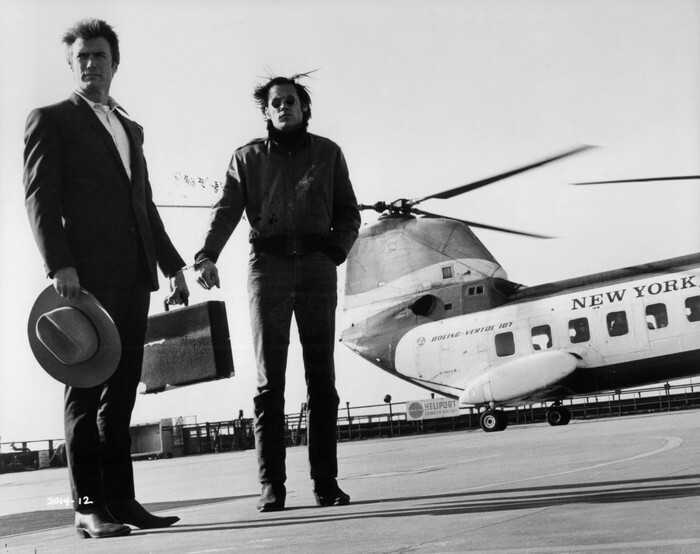
Subsequently, Leone's works began to be disparagingly called spaghetti westerns. But in America they gave rise to a genre that is called differently: the “revisionist Western.” It lacks the bravura of the old films and is more psychologically complex. All of Eastwood's films about the Wild West were made exactly in the style specified by Leone.
One cowboy, two cowboy
Having finally achieved great success, the actor, without wasting any time, developed vigorous activity in several directions at once. 
Hot on the heels of this, he starred in the western "Hang 'Em High" (1968) and subsequently regularly appeared in this genre: "Two Mules for Sister Sarah" (1970), "Joe Kidd" (1972), "High Plains Drifter" (1973) ). The film “Paint Your Wagon” (1969), in which Clint even sang, was not very successful, because it was a Western musical.
Another area of his interest was police action. In 1968, the film Coogan's Bluff was released, the main character of which, a tough and headstrong cop, became the forerunner of Eastwood's famous film image - Dirty Harry. 
At the same time, Clint began to tempt fans and critics with “atypical” roles. In 1967, ironizing the role of a macho man from the Wild West, he played Vittorio De Sica's confused Western lover, who dresses up as a cowboy to win back his wife's affection. The short story “A Matchless Evening” was included in the film collection “The Witches”.
In "The Beguiled" (1971), his character was a helpless patient who found himself at the mercy of treacherous women. In these films, Eastwood broke stereotypical ideas about himself, and, it should be noted, this strategy paid off: the most profitable film in Eastwood’s career was not a western or a police thriller, but the comedy “No matter how you look at it, you’ll lose” (1978) and its sequel “ As soon as you can" (1980), in which he played a truck driver traveling around the country in the company of an orangutan. 
Perhaps the public was so happy that the tough-as-nails Eastwood had a humane side that they flocked to the cinemas with redoubled enthusiasm to watch this miracle.
My own game
Being a great individualist, Eastwood did not like to play by someone else's rules, and the actor's dependence on film studios always seemed humiliating to him. As soon as the opportunity arose, in 1968 he founded his own film company, Malpaso Productions. Almost all of his film projects were created there, starting with “Hang Them Up High.” 
In 1971, he went further: having gained experience, he made his debut as a director, directing the thriller “Play Me Foggy.” Eastwood happily discards everything that previously irritated him in the work of other directors: numerous takes that exhaust the crew, fussing over unimportant details, disrespect for the actors.
“Foggy” bore the imprint of Eastwood’s music addiction: its leitmotif was the composition of the same name by jazz pianist Errol Garner. Clint also included footage from the 1970 Monterey Jazz Festival. 
Eastwood later made the film Bird about one of his favorite musicians, saxophonist Charlie Parker. Over time, he began to write songs that are heard in some of his films - “A Perfect World”, “The Bridges of Madison County” and others.
Hit the dirt
With all the abundance of films produced by Eastwood, the 1970s were for him the era of Dirty Harry. Originally conceived as a neo-noir, Dirty Harry (1971) became one of the first examples of so-called “vigilant cinema.” In these films, justice is carried out by lone heroes, while the police are either inactive or powerless. The hero can be a policeman, like, in fact, Harry Callahan, or an ordinary citizen - it is important that on the path of retribution he is ready to cross all formal laws and decency. 
Against the backdrop of growing street crime in American cities, such films were very popular. Some welcomed the new role model - a fighter against evil who is not afraid to get his hands dirty, others condemned Eastwood's hero for cruelty, machismo, sexism and romanticization of weapons.
Dirty Harry's symbol was his Smith & Wesson Model 29 revolver, which fired .44 Magnum bullets and was simply called the "44 Magnum." Dirty Harry had several sequels: Magnum Power (1973), Law Enforcer (1976), Sudden Impact (1983) and The Death Game (1988). 
In general, Harry resembled a slightly more verbose version of the Man Without a Name: the same eternally dissatisfied squint, the same epic phrases filtered through clenched teeth (for example, the ominous “Go ahead, make me happy!”, which President Reagan later quoted).
As an actor, Eastwood could not boast of a large range of expressive means. He stuck to a type that was convincing in his performance: a tough man who knew how to work with his fists, shoot accurately and joke just as accurately. With all the variety of circumstances in which his characters found themselves, they behaved in approximately the same way, be it a prisoner from Escape from Alcatraz or a country musician from The Bar Singing. Eastwood realized that his acting arsenal was quite limited, but he knew that he could compensate for this by sitting in the director's chair. 
Old man in a million
Over time, he became more and more interested in directing. And he received the Oscar as a director, not an actor. Eastwood regularly returned to the revisionist Western: Outlaw Josey Wales (1976), Bronco Billy (1980), Pale Rider (1985). The Wild West was the Promised Land for a maverick like Eastwood: a world in which the strong man decided for himself. As a result, Clint became the main face of the Western, eclipsing the glory of John Wayne, an actor of the previous generation.
It would seem, what new can be offered in this genre? But in 1992, Eastwood surprised everyone with the drama “Unforgiven.” This is the last Western he made, seasoned and wise, like its main character. The film won four Oscars, including best picture and best director. These were Eastwood's first Oscars. Subsequently, two more will be added to them in similar nominations for “Million Dollar Baby” (2005). 
The 1990s and 2000s became a time of directorial success for Eastwood: “A Perfect World” (1993) with Kevin Costner, “The Bridges of Madison County” (1995) with Meryl Streep, “Mystic River” (2003) with Sean Penn and Tim Robbins , the already mentioned “Million Dollar Baby,” as well as the duology “Flags of Our Fathers” and “Letters from Iwo Jima” (2005) is one of the best American war films, which for the first time offered a view of World War II from the side of the Japanese enemy.
Surprisingly, Eastwood's productivity is only increasing. Sometimes he makes two films a year. In 2008, “The Changeling” with Angelina Jolie and “Gran Torino” were released. In 2014 - “Jersey Boys” and “American Sniper”. In 2018, when Eastwood was 88 years old, “Train to Paris” and “Drug Courier.” At this pace, it is striking that each film is a thoughtful and carefully constructed statement, and not a self-repetition or something made in haste. 
Eastwood manages to maintain a balance between auteur and commercial cinema, creating successful films without compromising his principles. He says it's all about the stories that surround us. There are so many of them that there is no way to remain silent and no need to repeat what has already been said. And he chooses stories that are not the most obvious. For example, his penultimate film “The Richard Jewel Case” (2019), based on real events, about a security guard who prevents a terrorist attack during the 1996 Atlanta Olympics, but suddenly becomes a suspect in the plotting of this crime.
Eastwood has directed more than forty films. This is slightly less than the number of films in which he played the main role. No other popular actor has done this except him. 
Conversation with a chair
Eastwood is atypical in many ways. Few of the actors thought of, for example, becoming the mayor of a city. But Eastwood came, and for two years, from 1986, he ruled the small town of Carmel in California. It is in this place, inhabited mainly by wealthy bourgeoisie and artists, that the first film directed by Clint, Play Me Foggy, takes place.
In the area of politics, Eastwood is haunted by one problem: many consider him to be at least a devout Republican, if not even far-right. In reality, everything turns out to be not entirely true. He really was a Republican for many years and even in recent presidential races he supported candidates from this party: John McCain, Mitt Romney. However, he prefers to call himself a libertarian. “I was for cultural liberalism and fiscal conservatism long before it became fashionable,” Clint explains. 
At the 2012 Republican Convention, he gave his famous speech to an empty chair. This chair symbolized then-President Barack Obama, who, according to Eastwood, was “absent from work,” that is, did not cope well with the responsibilities of the head of state. The speech was almost improvised. The idea itself might not have been bad, but the performance looked a bit outlandish. Soon Clint and the empty chair became a meme, and Eastwood swore off staging spontaneous performances.
Eastwood also suffered after the release of American Sniper in 2014. This film, based on the memoirs of Chris Kyle, the most successful sniper during the Iraq campaign, was perceived almost as a right-wing manifesto and statement in support of American interventions in the Middle East. Eastwood was outraged. According to him, this film is “the biggest anti-war statement that can be made through cinema,” and other interpretations of “American Sniper” are the result of “weak-minded analysis.” 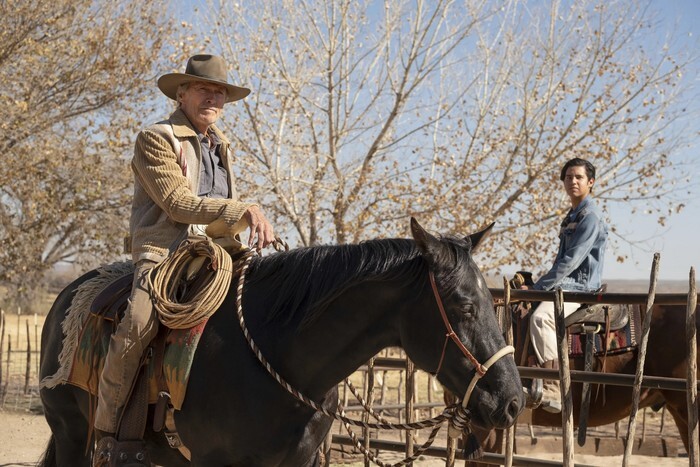
Eastwood probably felt annoyed that, in his ninth decade, he had to explain his views, which had been obvious to those who were even slightly interested in his life for half a century. He has always condemned US military invasions of other countries, advocated gun control, supported same-sex marriage, and made many other statements atypical for a Republican.
Nothing saddened him more than the fact that modern culture encourages weakness and infantilism in people, deprives them of courage, straightforwardness and courage. All other questions seemed too private to him. “As a child, I was irritated by people who told others how to live,” Eastwood said. 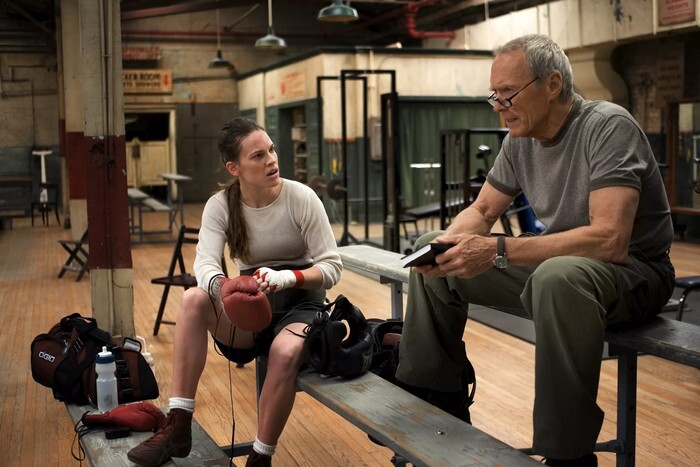
Single person
He really always lived as he wanted. His many women can attest to this. Eastwood was married twice, but marriage for him did not mean constancy and fidelity. In his personal life, Clint was very similar to his characters: lone wolves, willing to spend the night with a woman, but leaving at dawn. The definition of family man, so valued by ordinary Americans, suits him the least.
He has at least eight children from different women. Clint learned about some of them from the press. Eastwood's most famous descendant is Scott, one of two children with flight attendant Jacelyn Reeves. For many years, Eastwood hid his paternity, but eventually recognized his son and even introduced him to the world of cinema, starring in Flags of Our Fathers and Gran Torino. It was difficult not to recognize Scott, because he is a copy of his father in his youth. 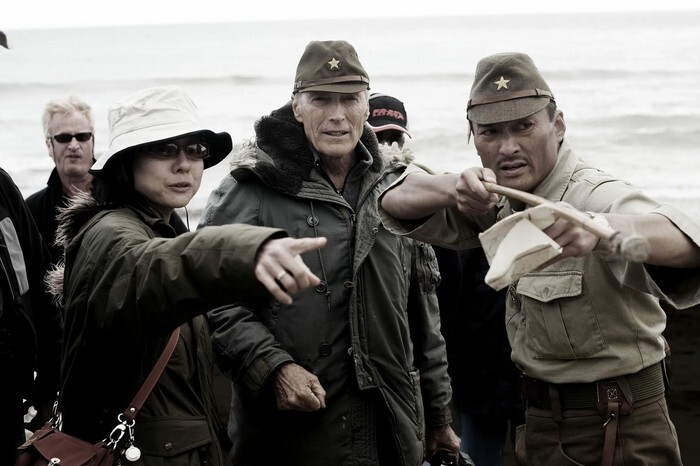
Eastwood always took care of his health and kept in good shape. Already in the late 1950s, he gave advice to readers of fitness and nutrition magazines. The death of his father at the age of 63 (Clint was 42 at the time) shocked the actor and forced him to be even more attentive to his lifestyle. But, fortunately, Eastwood took after his mother, who lived to be 97 years old.
He recently appeared on the famous Ellen DeGeneres Show, where he demonstrated that he can easily keep his body in the air by doing push-ups in a chair, like on parallel bars. 



